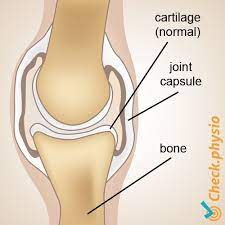Cystitis in Men : What Is It and Who Can Get It?
Cystitis is a common urinary tract infection (UTI) that primarily affects women, but it can also occur in men. Although …
Read More
Many people around the world are plagued by osteoarthritis, a degraded joint disease. This type of arthritis can occur in any joint in the body and is the most prevalent. The condition typically affects older adults, although it can occur at any age.
In this type of arthritis, cartilage in the joints breaks down, causing it to become degenerative. In conjunction to pad the bones, the ligament permits the joints to flawlessly move. A messed-up ligament makes bones rub against one another, causing a feeling of expansion, firmness, and pain. Hands, fingers, and joints bearing weight, such as knees, hips, and spine, often suffer from the condition. Osteoarthritis’ exact cause is unknown. It is believed that a combination of factors including age, genetics, and joint injuries cause it.
Conveying an abundance of weight puts additional weight on the joints, especially the weight-bearing joints like the hips, knees, and lower legs. This can speed up ligament breakdown and increase the risk of osteoarthritis.
While these are probably the most widely recognized reasons for this arthritis, it is important to note that not every person who has these risk factors is likely to develop the condition. Moreover, certain individuals may develop this arthritis regardless of whether they have any of these potential risk factors. The specific reasons for osteoarthritis are currently being examined. Scientists keep investigating upcoming factors that might influence the development of the condition.
While these are probably the most well-known side effects of this arthritis, it is important to note that not every person with the condition will encounter these side effects. Moreover, the severity of side effects can fluctuate from one individual to another and may change over the long run as the condition advances.
to these preventative measures, you can help to protect your joints and reduce your chances of developing this type of arthritis. If you experience joint pain or other side effects, it is vital to see a specialist for a precise assessment and treatment plan. With proper administration, you can live a full and dynamic life with this type of arthritis.
In conclusion, Osteoarthritis is a kind of joint inflammation that affects the joints and is the most common joint disease in the world. It happens when the joints separate, making them degenerative. While the specific reason for this type of arthritis is obscure, it is accepted to be the consequence of a mix of variables, including age,
hereditary qualities, and inflammatory wounds. Other risk factors for osteoarthritis include excessive pressure, weight, limb arrangement, and other fundamental conditions like rheumatoid joint inflammation or gout.
The most well-known side effects of osteoarthritis are joint pain, stiffness, limited movement, delicacy, expansion, and muscle weakness. Nonetheless, only one out of every odd individual with the condition will encounter these side effects. The severity of side effects can vary from one person to another.
To diminish the possibility of developing this arthritis or slowing its progression, people can take to preventive lengths. This includes keeping a solid weight, practicing consistently, safeguarding their joints from injury, and avoiding dreary pressure. There are many different medicines available to treat osteoarthritis, including prescriptions, noninvasive treatments, and medical procedures. This is depending on the severity of the condition.
“Always polite and delivers medication on time. Absolutely love the service they provide and great staff. Keep up the good work ????”
“A fantastic pharmacy. Efficient, helpful staff who deliver within a few hours of prescription being prescribed or less. Absolutely amazing service.”
“Can highly recommend this service, the delivery is so speedy and always reliable, delivered by hand to the door, just amazing, thank you.”
Cystitis is a common urinary tract infection (UTI) that primarily affects women, but it can also occur in men. Although …
Read MoreIntroduction: Unveiling the Mysteries of Soma Soma medication, also known as carisoprodol, is a muscle relaxant commonly prescribed to alleviate …
Read MoreUnderstanding Ramipril and Its Role in Health Ramipril, a medication commonly prescribed for high blood pressure and heart failure, belongs …
Read MoreClick one of our contacts below to chat on WhatsApp